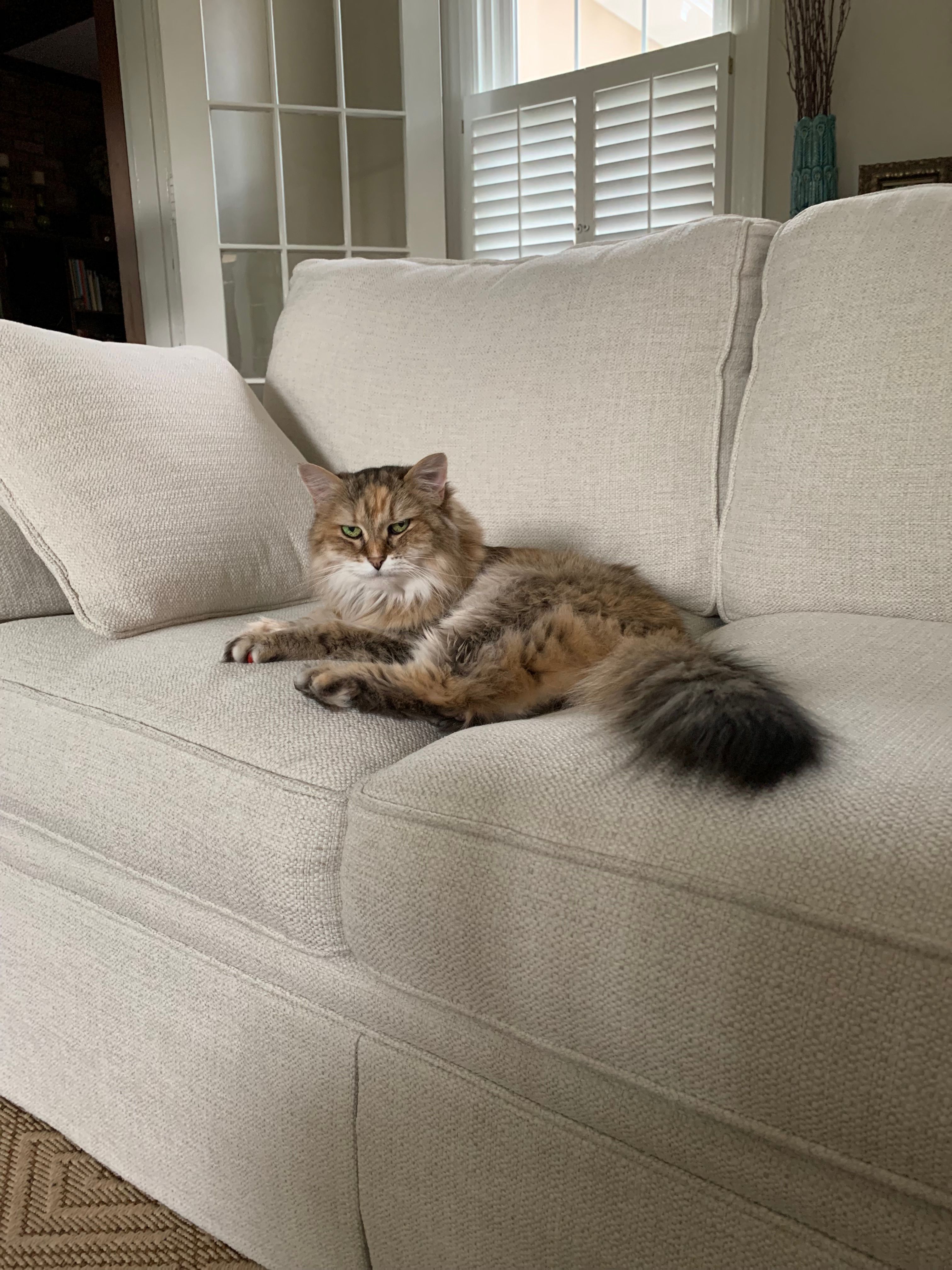One steroid drop, one time for allergic response
Athena, our nearly 17-year-old family cat.


I have a child with a hypersensitivity to cats. He is 10 years old, and our family cat, Athena, is going on 17 (in human years). Thankfully, my son does not experience anaphylaxis or significant respiratory symptoms from being around her. However, if he pets her and touches one of his eyes before washing his hands, he will have a significant conjunctival response as well as lid hyperemia.
It’s significant enough that I thought I came home from work to a bad case of viral conjunctivitis the first time it happened.
Whoever said you really don’t get to be good at pediatric eye care until you have a child yourself hit the nail on the head with my clinical experience. After limited success with a few ophthalmic allergy medications, I found a quick and easy fix for his encounters with the cat followed by his encounters with his eyeballs.
Previously by Dr. Casella: Everyone tries to figure out health care
One drop, one time
Yes, the first step is prevention, but we all live under the same roof. So, the inevitable does happen, albeit with decreasing frequency, and when it does, he gets a single (one-time) topical steroid drop. Which topical steroid do I prefer? I prefer whichever one is in our medicine cabinet. That’s all he needs. One drop one time, and he’s perfect in about 20 minutes with no rebound flush.
So, with this in mind, I got to thinking not long ago about what I would have done if my son had presented to my clinic as a patient with a significant allergic response to his conjunctiva and corresponding lids. I probably would have put him on a drop (a topical mast cell inhibitor/antihistamine or a topical steroid depending on severity of signs and symptoms) daily until a follow-up visit in five to seven days.
Also by Dr. Casella: I introduce myself to patients as Ben
However, my at-home experience with a family member has proven to me that I’m likely overtreating the patient at least some of the time.
This dichotomy of thought and experience has led me to re-examine my approach to encounters with patients who are suffering a non-chronic hypersensitivity that is confined to the ocular surface without corneal involvement. I learned long ago with topical steroids qid is a low starting dose.
However, maybe I should keep a bottle in my exam room for those few patients who may need a just single dose, then call me in an hour to describe their signs and symptoms. I have successfully followed this model for several years now with my son. Now, if I can get the kids to stop talking about a dog…
Read more editorials here

Newsletter
Want more insights like this? Subscribe to Optometry Times and get clinical pearls and practice tips delivered straight to your inbox.